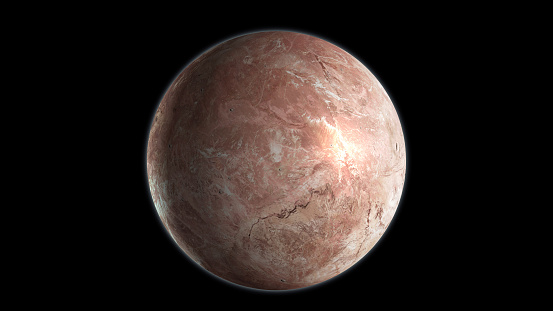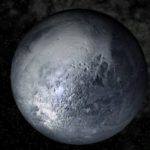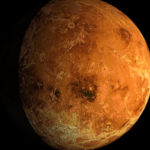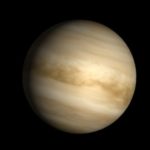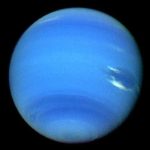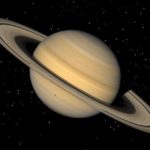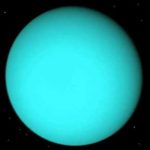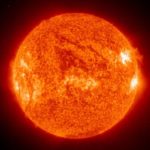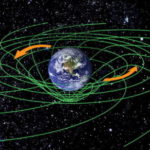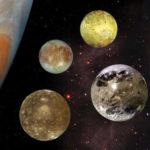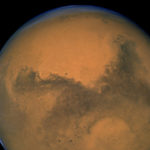10 Facts about Dwarf Planet Makemake – Interesting adn Fun Facts
We’re all familiar with the inner planets, most of which are named after Roman gods. Now astronomers are finding new objects, much further out in the solar system, and new names are starting to become familiar. One of these is Makemake, named after the creator god of Easter Island’s Rapa Nui people. Now let’s check the 10 interesting facts about the dwarf planet Makemake:
10 Facts about Makemake
- Mass: 2-5×1021 kg, equatorial diameter: 1,478km, orbit period: about 309.09 years, surface temperature: -243°C.
- How far from the Sun is Makemake? Makemake is far out in the Kuiper Belt. At its closest it’s 38.59 AU from the Sun – that’s 5,772,981,830km, or 3,608,113,643 miles. When it reaches the furthest point of its orbit it’s 52.84 AU (7,904,751,487km, 4,940,469,679 miles) away. Like the other dwarf planets in the Kuiper Belt Makemake’s orbit is tilted significantly away from the ecliptic, the plane the inner planets orbit on.
- When was it discovered? Makemake was discovered on the 31st of March 2005, by a team at California’s Palomar Observatory – the same team that discovered Haumea and Eris. It would probably have been discovered sooner if it wasn’t for it being so far from the ecliptic. Because it was found so soon after Easter it was first given the codename “Easterbunny”. The final name was chosen to keep the link with Easter.
- Can Makemake be seen from Earth? Probably not. When Makemake is closest to the Sun it’s just bright enough to be seen with a high-end amateur telescope, but for most amateur astronomers it’s out of reach. If you do catch a glimpse it will look like a tiny, faint star. Even the latest space telescopes have trouble getting good images of Makemake.
- Makemake is a tiny red planet. Like Pluto, Makemake appears to be red and it is a fact. This is probably because of chemicals called tholins. There’s also a lot of frozen methane on the surface, and reflected light suggests it’s in large crystals. Makemake seems to have quite a complex chemistry, with a mixture of hydrocarbon gases. It would be a good place for life to develop if it wasn’t so dark and cold – the sun’s light on Makemake is 1/1,500th as intense as on Earth.
- Is there anything unusual about it? Yes. Its orbit, like the other known dwarf planets in the Kuiper Belt, is tilted. Earth and the rest of the inner planets all orbit on or near the ecliptic, a flat plane with the Sun at its center. Makemake’s orbit cuts through the ecliptic at an angle of about 29 degrees – much steeper than Pluto’s or Haumea’s. This is one reason it wasn’t discovered until quite recently. The sky is large, so astronomers looking for new objects tend to concentrate on the ecliptic because there’s a higher chance of finding something there – but that might not always be true for Kuiper Belt objects.
- What is Makemake made up of? We don’t know. Scientists don’t even know how much it weighs. That’s mostly because no moons have been discovered yet. If a dwarf planet has moons it’s possible to work out its mass by watching how it and its moons orbit. From that, its size and knowledge of what materials are found in that region of the solar system, you can work out how dense it is and what it’s probably made of. We know how large Makemake is, but that’s all. However, it’s likely that there’s a rocky core with a thick ice mantle on top. The surface is mostly methane and nitrogen ice.
- What is the atmosphere like on Makemake? In fact, it’s almost non-existent. In April 2011 Makemake passed in front of a star, and astronomers were watching. Events like this are a good way to analyze distant planets because the way the star’s light scatters as it passes through the atmosphere can tell us a lot about what gases it contains. With Makemake, there was almost no scattering. Scientists think it probably has a thin atmosphere when it’s closest to the Sun, but it would be hundreds of thousands of times thinner than Earth’s. Dwarf planets can’t hold a dense atmosphere, because their weak gravity makes it easy for gases to escape into space.
- How long does a day last on Makemake? Makemake is rotating rapidly; a day lasts just 7.7 hours. On the surface, you wouldn’t notice a lot of difference though, because the Sun’s light is incredibly faint at that distance. A Makemake year is 309.09 Earth years long.
- Makemake is the only dwarf planet in the Kuiper Belt with no known moons – but Ceres, closer to the Sun, doesn’t have any either. It would take about 16 years for a space probe to reach Makemake.
Hope you enjoy these 10 interesting and fun facts about Makemake!
